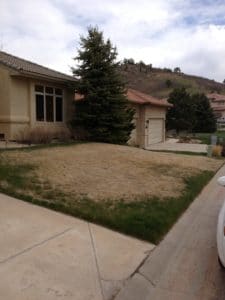
At Swingle, we take pride in providing our customers with the latest information on issues plaguing your Colorado landscape. Today’s issue concerns your lawn.
February 2017 was one of the warmest and driest on record.
The unseasonably warm temperatures, combined with a lack of moisture, can lead to desiccation on your lawn.
Desiccation is a state of extreme dryness, when water is lost at a faster rate than it’s replaced. This not only causes stress to the root system, but it also leaves your lawn more susceptible to mite attacks.
Lawn mites can be hard to diagnose to the untrained eye and are most active and damaging in the months of February, March, April and even into May. Homeowners often realize there’s an issue when patches of their lawn don’t appear to be greening up as the growing season progresses.
Severe mite problems are best mitigated with a combination of strategic watering and Miticide applications, which Swingle offers. If left  untreated, you might find yourself replacing part or all of your lawn come the spring. Because much of February has remained warm and dry, even a light snowfall will not eradicate the problem. Lawn mites have been provided the perfect conditions to survive in the root system, regardless of how much snow may be on top of them.
untreated, you might find yourself replacing part or all of your lawn come the spring. Because much of February has remained warm and dry, even a light snowfall will not eradicate the problem. Lawn mites have been provided the perfect conditions to survive in the root system, regardless of how much snow may be on top of them.
The best thing you can do to prevent mites from attacking your lawn is to water it during warm, dry conditions. A 30-45 minute watering, once a week, is sufficient during these times. Pay close attention to south and west facing areas of the yard, especially near evergreen trees and shrubs, and along building and slopes, as they tend to dry out much faster.
Contact us today for a free winter desiccation or lawn mite evaluation on your property.